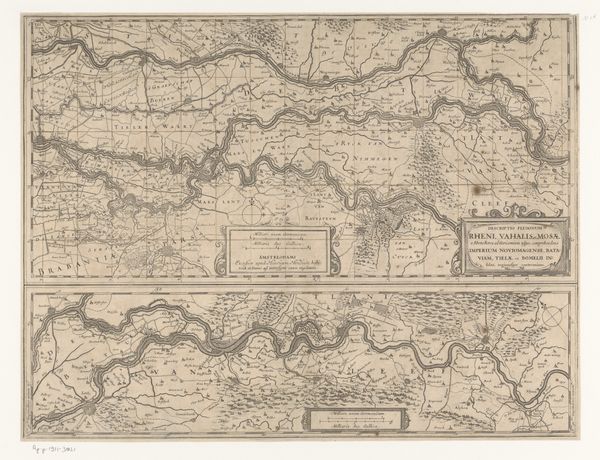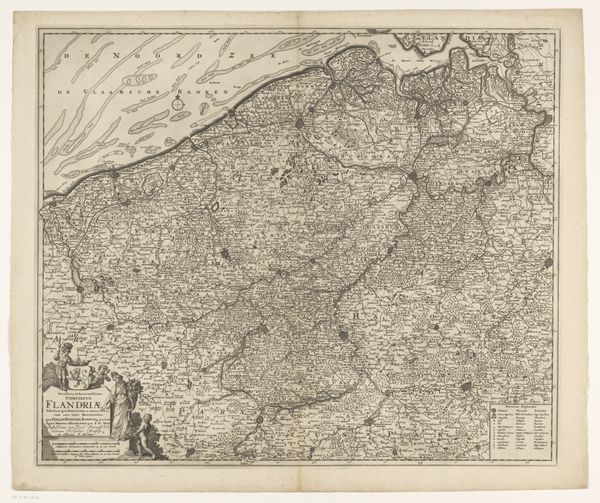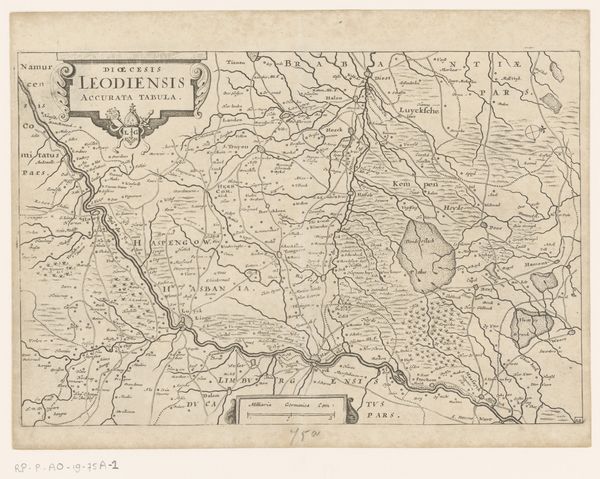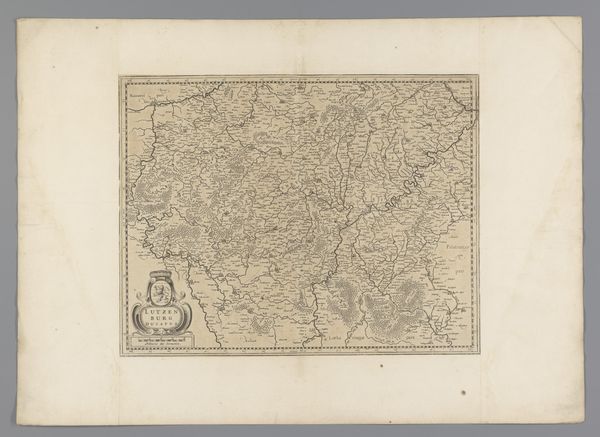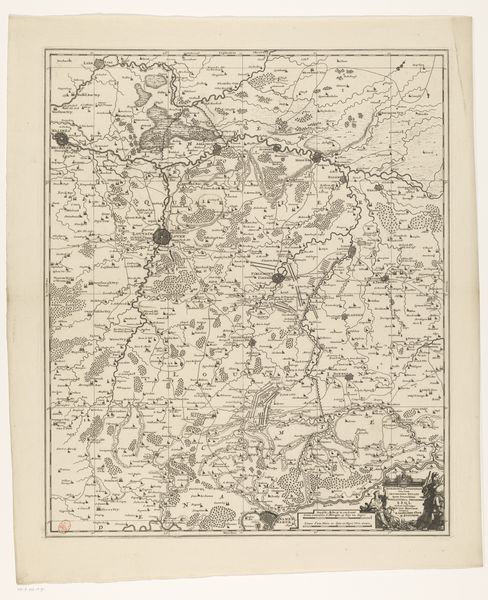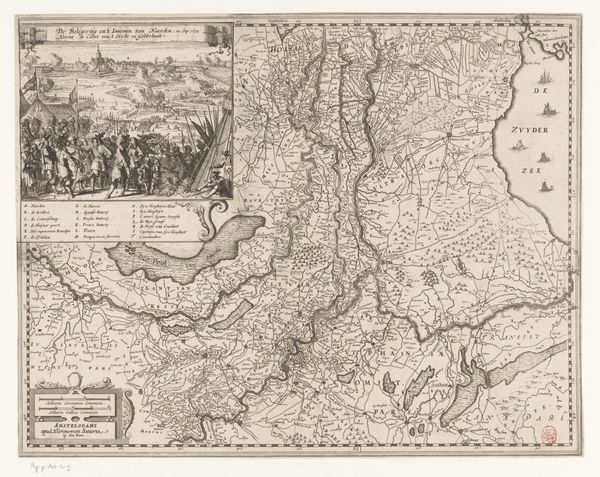
print, etching
#
baroque
# print
#
etching
#
landscape
#
etching
Dimensions: height 440 mm, width 568 mm
Copyright: Rijks Museum: Open Domain
Curator: Here we have Antonio Barbey's "Kaart van het Rijngebied," a map of the Rhine River Valley created in 1689. Editor: It looks incredibly intricate. The sheer amount of detail, all those tiny lines... it’s almost overwhelming. There's a certain dedication to labor evident in that density. Curator: Indeed. This etching offers us a fascinating lens through which to view late 17th-century cartography and its role in shaping political and geographic understanding. Editor: And those decisions of what to include, the shaping of that geography, tell us so much. Were these accurate depictions, or were they projections of power? How were they used, consumed, and by whom? Curator: Precisely! These maps played a key role in the political landscape of the time. Depicting territories and trade routes had massive implications for how people viewed power dynamics. Think of it as visual propaganda, influencing perceptions and solidifying territorial claims. Editor: Looking at it through the lens of production, I wonder about the tools used, the quality of the paper, the workshops where this etching was reproduced. Each element contributed to the meaning embedded in this image. The artist had to depend on the material limitations, on what that copper plate could offer them, right? Curator: Absolutely. Understanding the printmaking process—the labour involved, the access to resources, the print distribution—helps reveal the social context. Printmakers played a significant role in disseminating information and ideas across society at the time. Editor: And that tension is clear to see, a mix of the beautiful, illustrative art, and its place in the world of materials and economy. Fascinating! Curator: I agree. Barbey’s "Kaart van het Rijngebied" shows a window into the intricate connection between art, politics, and social order in the late 17th century.
Comments
No comments
Be the first to comment and join the conversation on the ultimate creative platform.

